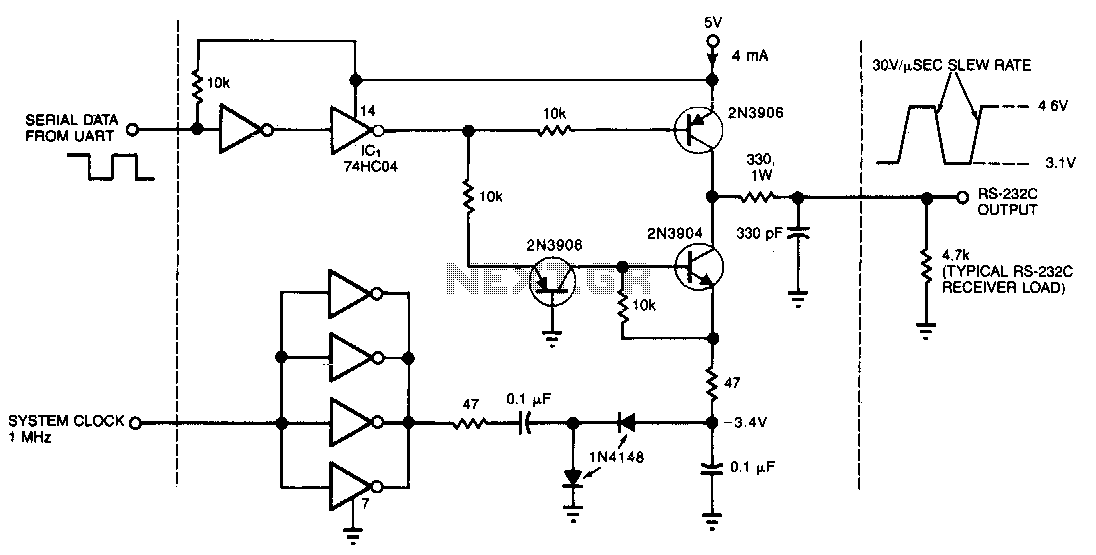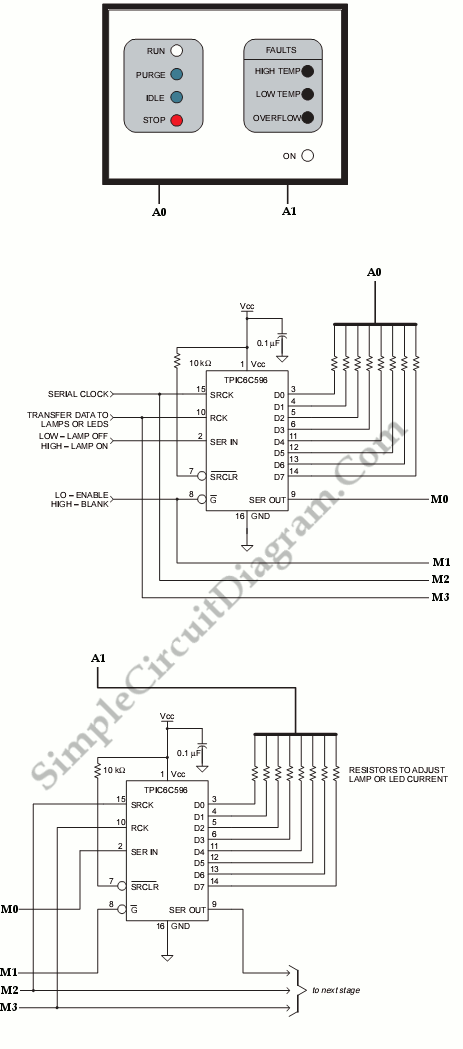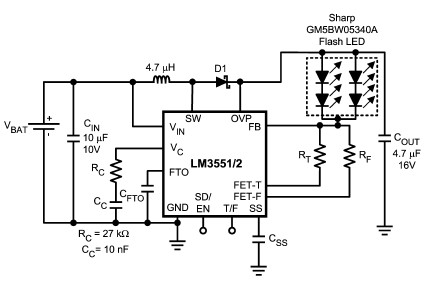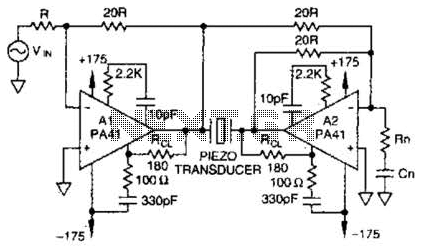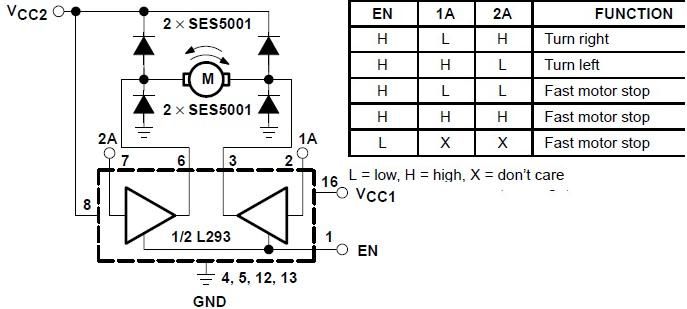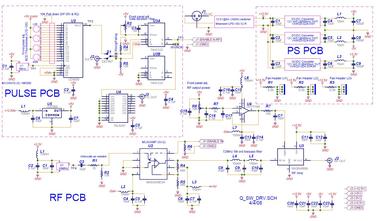
Glow Plug Driver for R/C Flightbox
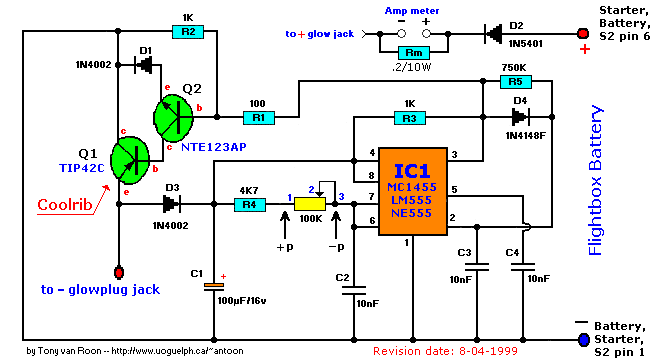
All errors in circuit diagrams, documents, and layout have been corrected. The circuit shown is functional and operational. It is important to note that Q2 is sensitive and can be easily damaged by incorrect connections, shorts, over-voltage, or excessive current. If the circuit does not work immediately and draws excessive current upon first use, it is likely that Q2 and possibly T1 are defective. A list of possible replacements for the major components is provided. A logarithmic potentiometer is suggested for better current control. All resistors, except Rm, should be metal-film recommended, rated at 1/8 watt (1/4 watt for carbon) and no less than 5% tolerance unless specified otherwise. The components include: C1 = 100uF/16V Electrolytic, R1 = 100 Ohm, 1/2 watt, C2 = 10nF ceramic, R2 = 1K, C3, C4 = 10nF mica, R3 = 1K, Q1 = TIP42C, R4 = 4K7, Q2 = NTE123AP, R5 = 750K, D2 = 1N5401, Rm = 2 ohm/10W, D1, D3 = 1N4002, P1 = 100K, D4 = 1N4148F, and IC1 = LM555. Substitutes for Q1 include TIP32C, TIP42, TIP42A (or B), NTE332, ECG332. For Q2: 2N3904, BC547 (or A or B), BC550, and European TUN. For D1, D3: NTE116, ECG116, and others. For D2: NTE5801 and others. For D4: NTE519, ECG519, and other 1N4148x types. The NTE123A is not compatible with the `AP` type. The 2N2222(A) did not function in the prototype and caused a short circuit. ECG and NTE/ECG substitutes are manufactured by Sylvania (Philips). Two units were built and both are functioning correctly. An on/off switch is not necessary for the glowplug driver since it only draws current when a glowplug is connected. The circuit is powered through Q1 only when a glowplug is attached. The starter motor operates directly from the flight box battery via the jacks on the power panel and has its own on/off switch. The fuel pump also has a reverse switch for pumping fuel in or out of the tank/cannister. Substitutes are acceptable for all components. D1 and D3 are standard 1N4002 diodes, which can be replaced with 1N4001 or 1N4003. D4 (1N4148F) is an ultra-fast switching silicon diode with a 100V PRV, and the more common 1N4148 also functions adequately. Q1 is a PNP power transistor/switch in a TO-220 case, rated at 6A, 80/100V, and 65 watts. Experimentation is encouraged, but a heat sink on the TIP42 is advisable as it may be necessary. A power supply is recommended for experimentation, allowing for gradual voltage increases while monitoring the ammeter. Previous experiments resulted in burned-out glowplugs, TIPs, and NTE123AP. Q2 is an NPN silicon AF/RF amplifier/driver transistor used to drive Q1. When substituting, it is essential to use a driver-type transistor to avoid immediate burnout upon power application. It is also critical to verify the orientation of the emitter, base, and collector, as they may differ from the original or the component layout. For metal case transistors (Q2), the tab is always the emitter. Q2 should be a driver-type transistor to ensure it supplies sufficient current to Q1. The 750K value of R5 can be achieved by combining different resistors, such as using two 1M5 resistors in parallel or a combination of 680K and 6M8 (totaling 754K). The CMOS timer, MC1455, is also referenced in the design.All errors in circuit diagrams, documents and layout are corrected. The circuit as shown below is functional and working. Note that Q2 is sensitive and easily destroyed by wrong connection, shorts, over-voltage or too much current. What does that mean If your circuit does not work immediately and draws excessive amounts of current when you first
try it you can easily assume that Q2 and possibly T1 will be defective. I included a small list with possible replacements for the major components. I tried a couple of them and seemed to work satisfactory. An email from Mo in England indicates a logarithmic potentiometer is used to better control the current. It certainly does not harm to try that and use whatever works for you. All resistors, except Rm, (metal-film recommended) 1/8 watt (1/4 watt for carbon) & no less than 5% tolerance, unless otherwise posted.
C1 = 100uF/16V Electrolytic R1 = 100 Ohm, 1/2 watt 1 red jack C2 = 10nF, ceramic R2 = 1K 1 black jack C3, C4 = 10nF, mica R3 = 1K 1 amp meter, 1 to 6-amp (dc) Q1 = TIP42C R4 = 4K7 1 knob for potentiometer Q2 = NTE123AP R5 = 750K 1 coolrib for Q1 D2 = 1N5401 Rm =. 2 ohm/10W D1, D3 = 1N4002 P1 = 100K D4 = 1N4148F Here is a suggestion for a complete Power Panel IC1 = LM555 A couple possible substitutes, use at your disgression, no guarantees: For Q1: TIP32C, TIP42, TIP42A (or B), NTE332, ECG332.
For Q2: 2N3904, BC547, (or A or B), BC550, European TUN. For D1, 3: NTE116, ECG116, try others. For D2: NTE5801, try others. For D4: NTE519, ECG519, other 1N4148x types worked also. For IC1: NE555, TLC555, MC1455, HC555, NTE955M, ECG955, etc. The NTE123A did not seem to work and is not quite the same as the `AP` type. The 2N2222(A) did not work in the prototype and shorted out the circuit. The ECG and NTE/ECG substitutes are made by Sylvania (Philips). I build two units and both working fine. An on/off switch is not required for the glowplug driver since it only draws current when a glowplug is attached. As a matter of fact, the circuit is only powered (via Q1) via a connected glowplug. Just in case you were wondering how the positive (+) side of the circuit is connected. The starter motor runs directly from the flight box battery, via the jacks on the power-panel, and has it`s own on/off switch.
Same scenario for the fuel pump, but includes a reverse switch to pump the fuel in or out the tank/cannister. For all components, substitutes are fine. D1 and D3 are regular 1N4002 diodes. You may substitute with the 1N4001, or 1N4003. D4 (1N4148F) is an ultra-fast switching silicon diode with a 100V prv. The regular and more familiar 1N4148 seems to work also. Q1 is a PNP power transistor/switch with a TO-220 case, 6A, 80/100V, 65 watts. Don`t be afraid to experiment, and don`t forget the coolrib on the TIP42, it may be needed. I strongly recommend a power supply if you`re gonna experiment and turn up the voltage slowly while watching the ampmeter.
My own experiments resulted in 3 burned out glowplugs, 2 TIPs, and 2 NTE123AP. Q2 is a NPN silicon, AF/RF Amp/Driver, transistor to drive Q1. If you substitute, stick with the `driver` type, other may burn-out the very second you apply power. Again, try using whatever you have in your parts-box first, but try to match the current/voltage parameters as close as you can and make sure it is able to drive Q1. Whatever transistor you use for Q1 or Q2, watch the orientation of the the emitter, base and collector and don`t assume it is the same as the original or as shown in the component layout.
The tab for the metal case transistors (Q2) is always the emitter. Remember, Q2, as mentioned before, should be a driver-type-transistor (or close to it) in order for it to supply enough current to Q1. In regards to the 750K value of R5, it is fine to combine different resistors to get to that value. I used two 1M5 resistors in parallel myself. Works fine! So does 680K+6M8 (754K). The CMOS timer, MC1455 🔗 External reference
try it you can easily assume that Q2 and possibly T1 will be defective. I included a small list with possible replacements for the major components. I tried a couple of them and seemed to work satisfactory. An email from Mo in England indicates a logarithmic potentiometer is used to better control the current. It certainly does not harm to try that and use whatever works for you. All resistors, except Rm, (metal-film recommended) 1/8 watt (1/4 watt for carbon) & no less than 5% tolerance, unless otherwise posted.
C1 = 100uF/16V Electrolytic R1 = 100 Ohm, 1/2 watt 1 red jack C2 = 10nF, ceramic R2 = 1K 1 black jack C3, C4 = 10nF, mica R3 = 1K 1 amp meter, 1 to 6-amp (dc) Q1 = TIP42C R4 = 4K7 1 knob for potentiometer Q2 = NTE123AP R5 = 750K 1 coolrib for Q1 D2 = 1N5401 Rm =. 2 ohm/10W D1, D3 = 1N4002 P1 = 100K D4 = 1N4148F Here is a suggestion for a complete Power Panel IC1 = LM555 A couple possible substitutes, use at your disgression, no guarantees: For Q1: TIP32C, TIP42, TIP42A (or B), NTE332, ECG332.
For Q2: 2N3904, BC547, (or A or B), BC550, European TUN. For D1, 3: NTE116, ECG116, try others. For D2: NTE5801, try others. For D4: NTE519, ECG519, other 1N4148x types worked also. For IC1: NE555, TLC555, MC1455, HC555, NTE955M, ECG955, etc. The NTE123A did not seem to work and is not quite the same as the `AP` type. The 2N2222(A) did not work in the prototype and shorted out the circuit. The ECG and NTE/ECG substitutes are made by Sylvania (Philips). I build two units and both working fine. An on/off switch is not required for the glowplug driver since it only draws current when a glowplug is attached. As a matter of fact, the circuit is only powered (via Q1) via a connected glowplug. Just in case you were wondering how the positive (+) side of the circuit is connected. The starter motor runs directly from the flight box battery, via the jacks on the power-panel, and has it`s own on/off switch.
Same scenario for the fuel pump, but includes a reverse switch to pump the fuel in or out the tank/cannister. For all components, substitutes are fine. D1 and D3 are regular 1N4002 diodes. You may substitute with the 1N4001, or 1N4003. D4 (1N4148F) is an ultra-fast switching silicon diode with a 100V prv. The regular and more familiar 1N4148 seems to work also. Q1 is a PNP power transistor/switch with a TO-220 case, 6A, 80/100V, 65 watts. Don`t be afraid to experiment, and don`t forget the coolrib on the TIP42, it may be needed. I strongly recommend a power supply if you`re gonna experiment and turn up the voltage slowly while watching the ampmeter.
My own experiments resulted in 3 burned out glowplugs, 2 TIPs, and 2 NTE123AP. Q2 is a NPN silicon, AF/RF Amp/Driver, transistor to drive Q1. If you substitute, stick with the `driver` type, other may burn-out the very second you apply power. Again, try using whatever you have in your parts-box first, but try to match the current/voltage parameters as close as you can and make sure it is able to drive Q1. Whatever transistor you use for Q1 or Q2, watch the orientation of the the emitter, base and collector and don`t assume it is the same as the original or as shown in the component layout.
The tab for the metal case transistors (Q2) is always the emitter. Remember, Q2, as mentioned before, should be a driver-type-transistor (or close to it) in order for it to supply enough current to Q1. In regards to the 750K value of R5, it is fine to combine different resistors to get to that value. I used two 1M5 resistors in parallel myself. Works fine! So does 680K+6M8 (754K). The CMOS timer, MC1455 🔗 External reference
